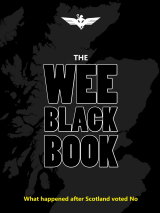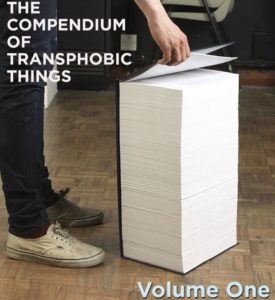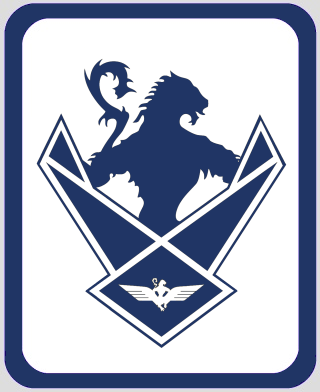The WoS Games Of The Year 2007 Part 3
No.1 – Earth Defence Force 2017
Well, I did say that Super Mario Galaxy existed in a category separate to other videogames, didn’t I? SMG is the creative zenith of a one-of-a-kind designer who would never be allowed into the videogames industry if he was just starting out today, and since he doesn’t design games like anyone else it doesn’t really seem proper to judge them against anyone else’s.
How would you compare two games like EDF and SMG even if you wanted to? How could you say which was best? On what common ground do they compete, apart from being displayed on a screen and controlled by a hand-held interface device? (In which case you might as well rank them against watching an episode of Doctor Who on a Sky+ box.)
In Part 2 I said that I rarely go back to a game after the initial session, and that’s the case with Galaxy, though not for the same reasons. The truth is that Super Mario Galaxy is so completely and utterly magical that I don’t want to play it again because I don’t ever want it to be over.
I’ve seen the end sequence, but I haven’t collected all the stars, because while there’s a part of the game uncompleted I’ll always know that it’s there, in case Miyamoto gets run down by a truck or roasted alive by a giant evil tortoise or something, and the magic won’t have ended. It actually, literally, transcends gaming, because it’s too good to play.
Such qualities, obviously, are something of a double-edged sword at best. After all, it’s a fat lot of good buying a videogame just to keep it on a pedestal in an underground vault, locked in a glass case with a hammer on top and “EMERGENCY USE ONLY – BREAK GLASS WHEN AUTHOR DIES” stamped on the front. Buy EDF and you’ll actually get to play with it, not keep it forever sealed in its packaging like a collectible original Star Wars figurine.
But goodness me, that’s damning EDF with some faint praise. And that’s not what we’re here for, because while it exists down here on Earth with the rest of us, it’s just about as magnificent a videogame as you could possibly hope to encounter. If SMG is the Queen – a sort of non-executive figurehead ostensibly ruling by ancient and divine right but really mostly for show and lacking any actual influence – then EDF is the Prime Minister, the ultimate “real” power in the land.
(Naturally that analogy refers to the office itself, rather than any of the living present or former incumbents. If it had to be a real one, EDF would obviously be Churchill, because he was a right bastard sometimes as well.)
We’ve already discussed several of the aspects that make EDF so great, but the last five elements of the game I want to highlight are the five “S”es – Scale, Setting, Story, Squad and Sunshine.
1. SCALE
Everything in EDF is built to epic dimensions. From the opening scene you see colossal alien spacecraft filling the sky, and you’re armed with missiles that can take down a city block. Everything is huge, including the impressive heights you can fly to in the helicopters you occasionally get to pilot, and from which you can literally see for miles.
And all the gargantuan stuff is properly in the game, too, not in cutscenes or behind invisible walls. If there’s a gigantic mothership and you’ve got the helicopter, you can fly all the way up to the mothership, jump out and run around on the roof.
The scale of the battlefield is enormous too. Your team gets rushed to all sorts of areas, from urban residential to beach to deep underground to out in the countryside, and while each individual level is vast in itself (often taking minutes to run from one side to the other), it also creates a sense of an entire coherent world.
And the scale encompasses enemy numbers as well as size – the skies can be full of huge attack drones, as dozens of giant ants, spiders and robots wreak havoc on the ground, and massive walking fortresses level entire districts with one laser blast. The absolute chaos that surrounds you in the centre of the action (including long moments when you’re just buffeted around helplessly between bugs and explosions) feels like a much more realistic depiction of battle than the cool calm control you’re routinely offered in most shooters.
2. SETTING
Obviously related to the above, one of the cleverest touches in EDF is that it feels like a world worth saving. Too many games take place in grim, desolate wastelands that you wouldn’t want to go to for money, never mind to get spewed on by supersized space spiders.
EDF’s universe is one of wide-open, clean cities, beautiful river canyons, grassy mountains and idyllic coastlines, and you really resent the alien invaders for laying waste to it, and for often causing you to blow large sections of it up. Later levels see much of the city already destroyed before you get there, which adds to the poignancy of the next element.
3. STORY
Most of the narrative in the game (played out as news bulletins or messages from HQ) is one of failure. Every little victory you achieve in a stage turns out to be almost worthless, as unseen events elsewhere hammer more nails into Earth’s coffin. By the time you near the end of the game, most of mankind’s defenders and a hefty chunk of mankind itself have been wiped out, and the EDF commanders are reduced to sending their troops out to die without hope against impossible odds, just to go down fighting.
Not having the player portrayed as the invincible hero saving the world at the last minute and making everything alright is a particularly bold step. Here you’re just a tiny insignificant cog, whose most monumental efforts seem most of the time to count for nothing.
4. SQUAD
You have no control whatsoever over any of your fellow soldiers, which is the way it should be (who the hell wants to be having to learn a bunch of absurdly complex commands to direct numerous CPU characters?), but the game manages to make them important anyway, though you never even get to hear their names.
You can go with them and cover each other’s backs, or you can let the rest of the team follow their course and try to give them fire support from a rooftop, or catch the enemy in a pincer movement. Between tactics and weapon choices there are dozens of different ways to approach a given mission, and if the one you choose sees your team isolated and slaughtered while you watch helplessly from afar, their anguished cries (followed by the eerie comms silence as you realise you’re on your own) are hard to bear.
5. SUNSHINE
The real stroke of bravery and genius in this game, though, and something which merits noting above and beyond the general setting, is the weather. I’m absolutely sick to my heart and soul of moody, gloomy, dark games set in night and fog and murk. Making it hard for the player to see where he’s going or where the next attack is coming from is cheap and lazy design born from the technical limitations of 20 years ago, and there are no excuses for it in the modern era.
Almost every level of EDF takes place in bright, beautiful sunshine under clear blue skies, and makes the presence of these malign intruders feel all the more wrong. You can see (and shoot) your enemies when they’re still just dots on the horizon, rather than them jumping at you from nowhere out of the shadows. (They don’t sneakily respawn from round corners out of sight either – you actually see the reinforcements dropping from the motherships, and can shoot them as they fall.)
And when the lights occasionally do lower, it’s because you’re fighting against the backdrop of a stunning sunset, in which the gleaming silver bodywork of the alien robots stands out like a sore thumb in a bucket of elbows. Ultimately, I think I love EDF most because of the sunshine.
So in summary, then: the top three WoS Games Of The Year 2007 are, in reverse order:
1. EDF!





























Heard much about Sandlot’s new Wii game?
Is the PS2 one worth a go if you don’t have the means to play this one? Or is it bobbins?
The PS2 one is good. A lot of people say it’s actually better, but I don’t agree – it’s too grey, for a start. But it’s certainly a decent alternative.
I prefer Global Defence Force (the PS2 incarnation) but it loses out on a lot of the points the Rev made here: being rush-translated (I guess) it has no voice-over or speech (the little mission descriptions are sometimes quite touching), there are no other fighters around (losing a lot of the charm and tactical variety of EDF but there are civillians that can be sacrificed or defended) and though there are a few sunset levels that look fabulous a lot of the combat is against overcast skies.
For setting the games are more or less identical (though EDF is set as a prequel to the earlier GDF) and I would argue that GDF wins on scale: the largest enemies are staggering in scale and there is a greater variety of mid-sized nasties including some terrifying robots and insects not really replicated in EDF.
I recently picked up GDF for £1 at Gamestation. I’ve not given it a go yet, mainly due to how awful the PS2 looks on my LCD telly.
EDF is an excellent game – it’s also fascinating to see people’s reactions to it. Reactions which tend to be at one end of the scale or the other.
A pound? Cripes: I got about 110 hours of fun out of that game before I started farming and generally messing about.
EDF! EDF!
game (with swos) i bought my 360 for,just to feel the mayhem
EDF never crossed my scanners until reading this but after checking out the game-play footage I’ll be picking it up for sure. It looks like Gears Of War except with fun and colours.
Level 51 of EDF is absolute mayhem and I'm loving every minute!